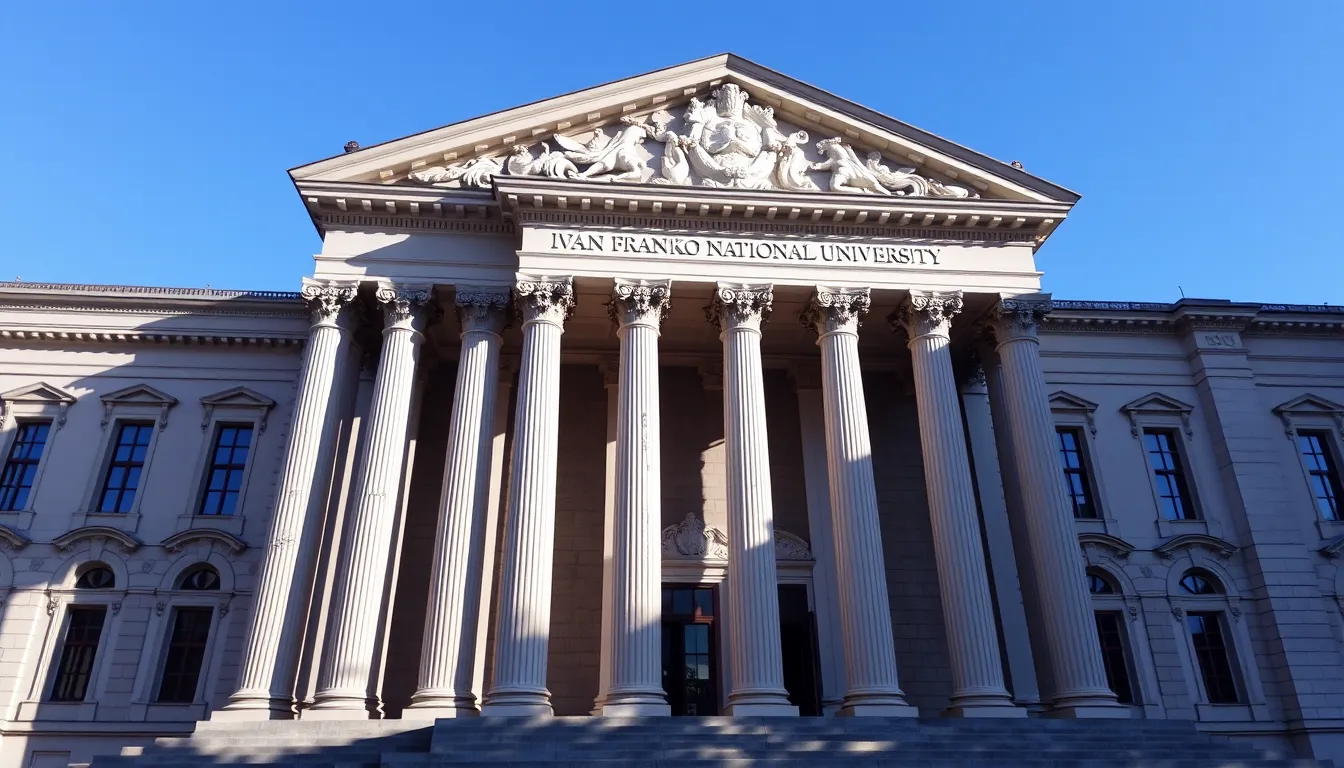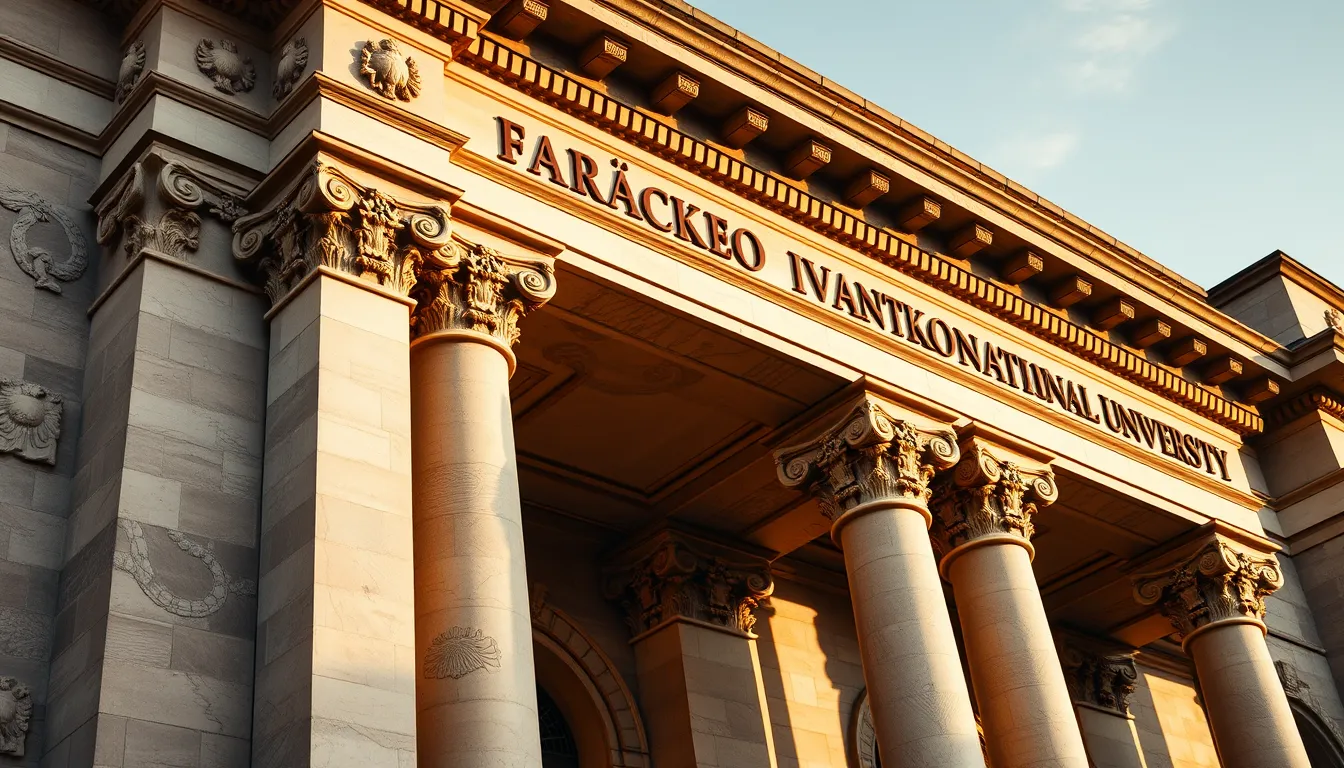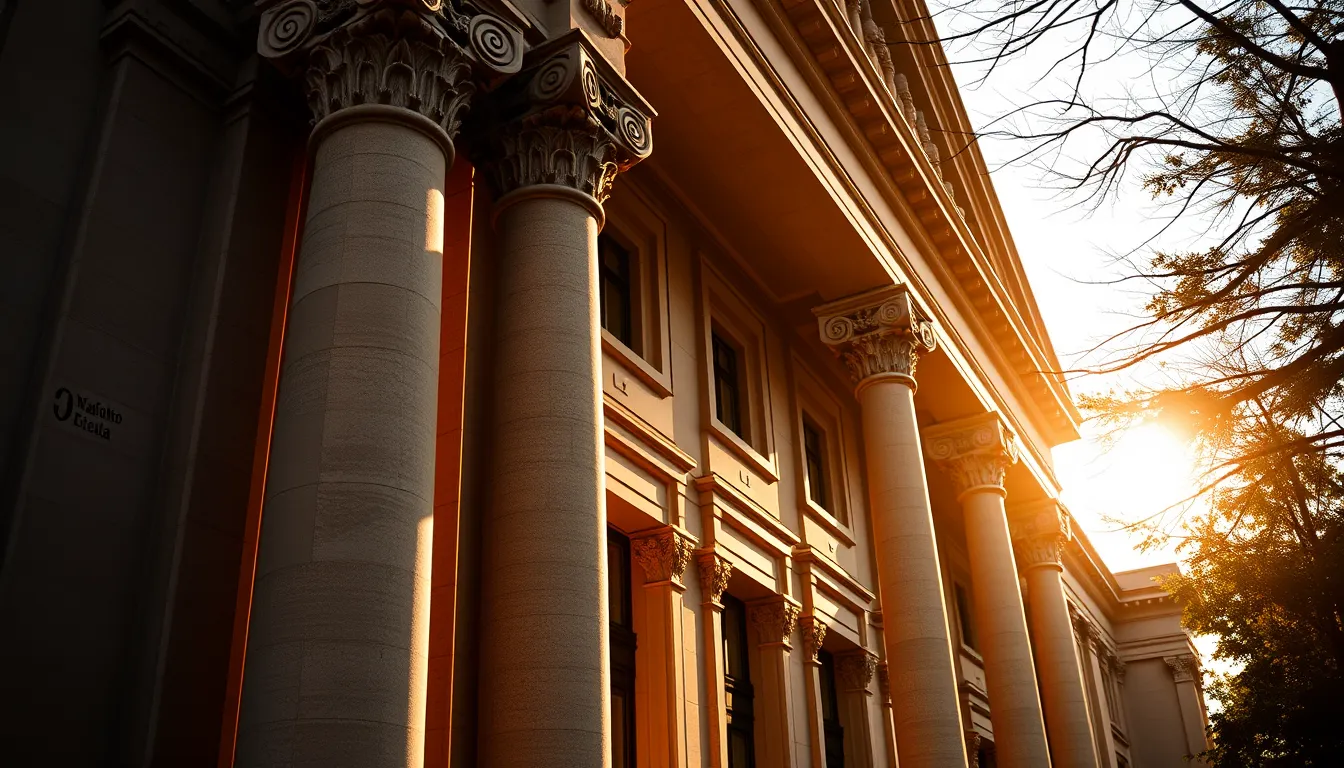Lviv’s universities are not merely places of education; they are veritable treasures of architecture that reflect the city’s rich history and cultural heritage. Each institution showcases a blend of various architectural styles, with structures that narrate stories of the past while contributing significantly to the urban landscape.
The architectural significance of Lviv’s universities can be attributed to several factors:
- Historical Resonance: Established as early as the 17th century, Lviv’s educational institutions have witnessed centuries of transformations. Their structures incorporate elements from different periods, making them crucial for understanding the evolution of architectural practices in the region.
- Diverse Styles: The universities boast an array of architectural styles, including Gothic, Renaissance, Baroque, and Neoclassical. Each building possesses distinct characteristics, showcasing the trends and influences that shaped Lviv over the years.
- Cultural Symbolism: The architecture of these institutions symbolizes Lviv’s role as a cultural and intellectual center in Central Europe. They embody the spirit of enlightenment, innovation, and the pursuit of knowledge that has characterized the city for centuries.
- Integration with Urban Fabric: The placement and design of Lviv’s universities are integral to the city’s layout. They contribute to the aesthetic continuity of the urban environment, with their sprawling campuses and grand facades enhancing the overall charm of Lviv.
Notable examples include the Lviv Polytechnic National University, a pioneer in technical education in the region, whose eclectic style combines functional elements with bold classical touches. The Ivan Franko National University of Lviv, with its majestic neoclassical facade, not only serves as an educational hub but also as a monument to the city’s historical significance.
“The universities of Lviv are the guardians of knowledge and the keepers of the city’s architectural soul.”
Each building in these institutions stands as a testament to the collaborative spirit of architects, educators, and communities that have shaped the city’s educational landscape over the years. The architectural significance of Lviv’s universities goes beyond their physical structures; they are emblematic of the city’s broader narrative, intertwining education, culture, and art in a uniquely Lvivian context.
Historical overview of Lviv’s educational institutions
The history of Lviv’s educational institutions is both rich and complex, tracing its origins back to the medieval period. The establishment of higher education in Lviv is closely tied to the city’s strategic location and its role as a trade and cultural hub in Central Europe. The early roots of Lviv’s educational enterprises can be found in the establishment of the Latin School in the late 14th century, which laid the groundwork for more formalized higher education in the region.
In the 17th century, significant advancements were made with the establishment of the Jesuit Academy, which marked the first major effort to formalize higher education in Lviv. This institution was later transformed into Lviv University, officially founded in 1661, making it one of the oldest universities in Eastern Europe. Lviv University soon became a center of thought, philosophy, and the arts, drawing students from across various regions. The Jesuit influence is evident in the architectural style of early buildings, which display elements of Baroque architecture characterized by elaborate facades and ornate decorations.
Throughout the 19th century, Lviv became a focal point for a series of educational institutions that catered to the needs of a diverse population. The establishment of the Technical University in 1816 (now Lviv Polytechnic National University) represented a turning point in the educational landscape, introducing technical and engineering disciplines to the curriculum. This period saw a blossoming of architectural styles as these institutions expanded, with buildings that showcased Neoclassical and Romantic influences, reflecting the broader European architectural movements of the time.
By the turn of the 20th century, Lviv had solidified its reputation as an educational melting pot. The Lviv University underwent significant reconstruction and expansion, resulting in impressive structures such as the iconic Main Building, which boasts a striking combination of historical and contemporary architectural elements. Unlike its predecessors, these structures incorporated modern amenities while preserving the classical essence, symbolizing progress and continuity in education.
After World War II, the educational institutions in Lviv, like others in Ukraine, were transformed under Soviet influence, leading to the rebuild and repurposing of many of their buildings. The architecture from this era tends to reflect a utilitarian style, with an emphasis on functionality over opulent design. However, even during this period, significant efforts were made to maintain the existing historical structures, ensuring that the architectural heritage remained relevant in the context of contemporary education.
The historical narrative of Lviv’s universities reveals a tapestry of growth and adaptation shaped by political, cultural, and social changes. The buildings do not merely house students and faculty; they embody the intellectual aspirations of generations, standing as milestones that trace the evolution of education in our modern context.
Prominent architectural styles represented
Lviv is a city where numerous architectural styles intermingle, each telling eloquent stories of the past. The universities within its bounds serve as perfect exemplars of this rich tapestry, showcasing a variety of prominent architectural movements that reflect not only the aesthetic preferences of their respective eras but also the functional demands of educational institutions.
One of the most striking architectural styles represented in Lviv’s universities is Neoclassicism. This style, characterized by its grandiosity and symmetry, is epitomized by the facade of the Ivan Franko National University of Lviv. Built in the 19th century, this institution boasts large columns and intricate details that invite admiration. The building conveys a sense of dignity and permanence, aligning perfectly with its role as a center for higher learning.
| Architectural Style | Key Features | Notable Example |
|---|---|---|
| Neoclassicism | Grand columns, symmetry, ornate details | Ivan Franko National University |
| Baroque | Dynamic shapes, dramatic contrasts, elaborate decorations | Jesuit Church and Academy Buildings |
| Gothic Revival | Pointed arches, ribbed vaults, intricate facades | Lviv Polytechnic National University |
| Functionalism | Simplicity, lack of ornamentation, focus on utility | Post-WWII Education Buildings |
Alongside Neoclassicism, the universities celebrate the Baroque style, which can be vividly seen in the grandeur of the Jesuit Academy. The intricate facades and dynamic shapes associated with Baroque architecture express the dramatic flair of the era. The Church of Saint Peter and Paul, adjacent to the academy, exemplifies this style with its elaborate exterior designed to captivate and inspire, reminiscent of the educational fervor during the time of its construction.
“Baroque architecture in Lviv is not just about ornamentation; it’s a reflection of an age when education was seen as a pathway to the divine.”
The Gothic Revival style also finds its place in Lviv’s architectural vocabulary. Particularly in the university realms, structures like the Lviv Polytechnic National University’s striking buildings display pointed arches and ribbed vaults, adding an air of medieval grandeur. This style symbolizes a longing for a past that emphasizes intellectual and spiritual pursuits, seamlessly integrative of discipline and creativity.
In contrast to these historic styles, the era following World War II ushered in a wave of Functionalism. With an emphasis on practicality and utility, many educational buildings created during this period reflect a more minimalist design philosophy. The shift to functionality often meant sacrificing ornate details in favor of structures that could efficiently support educational activities, yet efforts were made to integrate these newer buildings with their historic counterparts, maintaining Lviv’s architectural narrative.
The architectural styles represented in Lviv’s universities form a vivid illustration of the evolution of educational philosophies over centuries. These buildings not only serve educational purposes but are also active participants in Lviv’s rich historical dialogue, carrying the weight of intellectual tradition and fostering a sense of place that resonates with students and visitors alike.
Key buildings and their unique features

Lviv is home to several remarkable university buildings, each distinguished by unique architectural features that reflect the city’s storied past. Among the key structures, the Ivan Franko National University of Lviv stands out not only for its size but for its majestic neoclassical facade adorned with grand columns and detailed ornamentation. This structure, a symbol of knowledge and enlightenment, also includes an impressive interior that features robust staircases, arched entryways, and expansive lecture halls designed to inspire generations of scholars.
Another architectural treasure is the Lviv Polytechnic National University, which showcases a blend of styles, prominently featuring elements of Gothic Revival. Characterized by pointed arches and intricate stonework, the main building of Lviv Polytechnic exudes a sense of strength and permanence. The university grounds are lined with lush green spaces that provide a serene environment, encouraging students to engage with their studies amidst the beauty of the designed landscape.
“In Lviv, the universities are not mere institutions; they are monuments celebrating the pursuit of knowledge through architecture.”
The Jesuit Church and Academy Buildings, historic examples of Baroque architecture, were integral to the development of educational institutions in Lviv. The elaborate facades, with their dynamic shapes and dramatic contrasts, create a visual spectacle that captivates visitors and students alike. These buildings serve as a reminder of the spiritual and educational pursuits that have long been interwoven in Lviv’s cultural fabric.
| Building | Architectural Style | Unique Features |
|---|---|---|
| Ivan Franko National University | Neoclassical | Grand columns, ornate decoration, expansive lecture halls |
| Lviv Polytechnic National University | Gothic Revival | Pointed arches, intricate stonework, serene grounds |
| Jesuit Academy | Baroque | Elaborate facades, dynamic architectural forms, historical significance |
Additionally, the centerpiece of Ukrainian Catholic University features modern architecture, yet it’s designed to harmonize with its historic surroundings. The contemporary design includes large glass panels that invite natural light, creating an open, inviting atmosphere while paying homage to Lviv’s traditional stone structures. This blend of old and new epitomizes the ongoing evolution of Lviv’s architectural narrative, showcasing the city’s commitment to education through innovative design.
Each university building in Lviv tells its own story, weaving together elements of history, culture, and education. The unique architectural features not only inspire those who study and work in them but also serve as a testament to Lviv’s status as a prominent educational center in Eastern Europe. As these iconic structures continue to stand the test of time, they remain integral to the city’s identity and rich architectural heritage.
Influence on the city’s cultural landscape
Lviv’s universities have profoundly influenced the city’s cultural landscape, giving the urban environment a unique character that reflects the city’s rich history and intellectual vibrancy. As educational institutions, they serve as sanctuaries of knowledge and creativity, while their architectural grandeur contributes to a distinct urban aesthetic that attracts visitors and scholars from around the globe.
The universities are more than educational facilities; they are cultural landmarks that resonate with both the students who inhabit their spaces and the locals who regard these structures as integral parts of their community. For many residents, the university buildings represent an aspiration—places where future leaders, innovators, and thinkers are formed. The presence of these institutions has fostered a culture that celebrates learning, creativity, and scholarly pursuits.
Moreover, the architectural styles represented in these universities have become synonymous with Lviv’s identity. The elegant neoclassical and intricate Baroque facades are not merely backdrops for academic life; they contribute to a collective memory and narrative that encapsulates Lviv’s past and continues to shape its future. These buildings frequently host cultural events, conferences, and exhibitions, further intertwining the educational environment with the city’s broader cultural activities.
“Every arch and column in Lviv’s universities whispers tales of intellectual legacy and cultural diversity.”
In addition, Lviv’s universities actively participate in city life through public lectures, art displays, and cultural festivals. Events such as these create a dynamic exchange between the academic community and the general public, enriching the cultural fabric of the city. The universities often collaborate with local artists, historians, and cultural organizations, facilitating a vibrant dialogue that highlights the depth of Lviv’s creative scene.
As centers of innovation, Lviv’s educational institutions also amplify the city’s status as a hub for research and development. By attracting students and academics from various backgrounds, these universities enhance the cultural diversity of Lviv, creating a melting pot of ideas and values that resonate throughout the community. This influx of diverse thoughts and influences not only enriches the educational experience but also adds layers to the cultural expressions found within the city.
| Cultural Influence | Description |
|---|---|
| Public Engagement | Hosting events and cultural activities that invite community participation |
| Architectural Symbolism | Structures that embody the city’s intellectual aspirations and historical legacy |
| Diversity and Innovation | The influx of varied perspectives and ideas from a diverse student body |
Furthermore, the architectural heritage of Lviv’s universities serves as a source of pride for its inhabitants. Educational buildings are often seen as embodiments of the city’s resilience and its unwavering commitment to education despite historical challenges. These structures remind the citizens of their collective heritage and serve to inspire a sense of responsibility towards preserving Lviv’s architectural identity.
The influence of Lviv’s universities on the city’s cultural landscape is both profound and far-reaching. By intertwining education, architecture, and community engagement, they not only shape the experiences of their students but also enhance the cultural richness of Lviv, ensuring that the legacy of knowledge and creativity continues to thrive in the heart of this remarkable city.
Preservation efforts and challenges faced
The preservation of Lviv’s architectural heritage related to its universities faces a multitude of challenges that reflect broader issues concerning cultural heritage and urban development. As the city evolves, balancing modern needs with the conservation of its historic structures becomes increasingly complex.
One significant challenge lies in the ongoing demands of urbanization. Lviv has undergone rapid development, with new construction projects often encroaching upon the spaces surrounding these historic educational institutions. This expansion can threaten the visual integrity and historical context of Lviv’s architectural gems. The integration of modern architecture must be approached with sensitivity to ensure that the unique character of these university buildings remains intact.
Another pressing concern is the financial aspect of preservation. While the city recognizes the importance of its cultural heritage, the funding necessary for maintenance and renovation of aging structures is often inadequate. Many buildings require significant investment to address issues such as structural deterioration, water damage, and outdated facilities, which can detract from their educational functions. Uncertainties in funding sources can lead to delays in necessary restoration projects, putting invaluable architectural heritage at risk.
“Preserving the past is as important as building for the future; both are essential for the soul of a city.”
The fluctuating political climate also plays a role in the preservation of Lviv’s universities. As governance changes, priorities can shift, impacting how cultural heritage and educational institutions are supported. Community engagement is vital for advocating the preservation of these sites, but it can be inconsistent; grassroots movements often face challenges in mobilizing sustained support for their causes.
Despite these hurdles, efforts are underway to safeguard the architectural heritage of Lviv’s universities. Local organizations and international partnerships are increasingly involved in preservation initiatives. For instance, collaborative projects aim to involve students and faculty members in restoration efforts, enhancing their connection to the historical narrative embedded within their institutions.
| Preservation Efforts | Description |
|---|---|
| Community Engagement | Involvement of local citizens in advocacy and restoration projects |
| International Collaboration | Partnerships with global organizations to secure funding and expertise |
| Educational Initiatives | Integration of preservation into university curricula and outreach programs |
Your participation is crucial in driving the narrative of Lviv’s architectural preservation. Students and faculty often host workshops, lectures, and cultural events that not only celebrate architectural heritage but also raise awareness about the importance of preserving it for future generations. Such initiatives serve to strengthen the bond between the universities and the community, reminding all citizens of their shared responsibility to protect the essence of Lviv’s identity.
Moreover, Lviv has seen the growth of heritage tourism that emphasizes the city’s architectural marvels. This trend can ignite support for preservation due to the economic benefits derived from maintaining attractive historic sites. However, tourism must be managed thoughtfully to avoid exacerbating wear and tear on these structures. Sustainable tourism practices aim to balance economic gains with the need to maintain and protect the integrity of Lviv’s university buildings.
The preservation of Lviv’s universities and their architectural heritage requires a multifaceted strategy, addressing financial, community, and policy issues. As these institutions continue to evolve amid modern challenges, their preservation will be a testament to Lviv’s commitment to honoring its rich past while forging a path toward a dynamic future.


